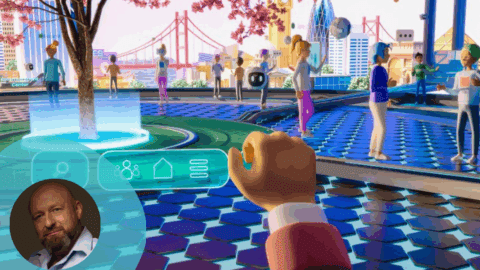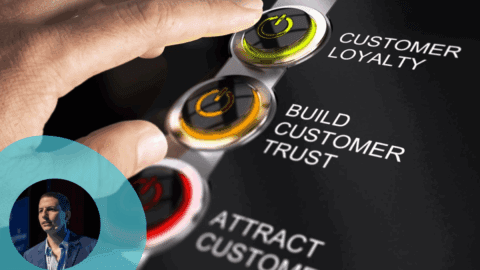Following is Part 3 of the Retail TouchPoints series focused on Retail Wins In Gamification. This article uncovers best practices for successful gamification. Thought leaders and experts in gamification also share their predictions regarding key trends during 2013 and beyond. Click here to download a PDF version of the full report.
Gamification is a hot trend and many retail innovators are enjoying the benefits. The appeal of gamification, for both consumers and employees, is driven by competitive nature shared by a majority of people, along with pure enjoyment and camaraderie. Gabe Zichermann, Chair of the Gamification Summit and CEO of dopamine identifies these drivers as the three F’s: Feedback, Friends and Fun.
- Feedback: When employees do well, an employer should reward those efforts. Similarly, when a consumer commits to purchasing a retailer’s products, the retailer should reward those consumers for their loyalty.
- Friends: By involving friends and creating camaraderie, users have a personal investment and motivation for participating in games and challenges.
- Fun: Games are fun. Most, if not all, people, including consumers and employees, like to participate in things that are fun.
To facilitate gamification, Zichermann said that companies can offer four types of rewards: status, access, power and stuff. Regardless of the reward type, a good gamification strategy relies on recognizing and rewarding consumers and employees to reinforce and promote desired behaviors and actions, he noted.
“Gamified loyalty is different from regular loyalty because it focuses on intangible rewards, non-cash rewards.” Zichermann said. “Smart retailers understand that there is a lot more to a sale than just getting someone to pull their card out and swipe it. Before and after that transaction, there’s a huge amount of interaction that occurs, usually on social media. You have to capture that kind of activity and incentivize it in the right way so you can drive consumer behavior that moves your business forward.”
Zichermann also shared three mistakes retailers often make during campaign planning and execution:
- Focusing on badges. Badges are not enough on their own. They need to be backed by things that are meaningful, interesting and important to consumers and/or employees.
- Turning everything into a game. Good gamification is about taking the best ideas from games and applying them to relevant problems or company goals that need to be addressed.
- Identifying the purchase as the beginning of a retailer-consumer relationship. Consumers often research different retailers online and consider purchases based on their specific wants and needs. Retailers must be present during this crucial decision-making period, through social media or other forms of digital and in-person interaction.
Getting Help With Gamification Strategies
Retailers with strong first-party analytics departments might be able to draft and employ a gamification program independently, but it is becoming increasingly common for companies to hire specialist partners.
“One of the questions that retailers always ask is whether they should consult with a gamification company or produce a campaign internally,” said Doug Palmer, Principal with the Deloitte Social Business Practice. “It is clear some are using their customer service and analytic departments to build their programs. Others are going to companies such as Bunchball and are using those platforms and engines.”
For example, Ford of Canada worked with Bunchball to integrate gamification into the learning management system for service and sales representatives in the area. By using game mechanics to teach employees about new financing plans and technology options for vehicles, Ford saw a 470% increase in site utilization.
Within one month, Ford saw more traffic than in the entire previous year. The most notable performance increase, however, came from young employees, who were more engaged than usual and went above and beyond what was required of them, according to the company.
When planning to reward workers, Brian Burke, VP of Research at Gartner, advocates designing gamification mechanics for middle performers, veering away from competitions that only appeal to top-performing workers and discourage other employees from participating. When an employee gamification campaign focuses on collaborative rather than competitive efforts, there will be a greater performance boost throughout the majority of the workforce rather than the top percentile.
“If you think about the Boy Scouts, they have a lot of badges and any Scout can get as many badges as he wants,” Burke said. “He just has to achieve them. Gamification for employees should be about motivating and increasing communication, not necessarily competition.”
Gamification Trends For 2013 And Beyond
The gamification industry currently is experiencing explosive growth, with organizations across market segments leveraging challenges, goals and tasks, as well as points, badges and leaderboards, designed to engage employees and customers.
As gamification continues to evolve, the fundamental mechanics developed over the past few years “will continue to be the bread-and-butter of most gamification campaigns,” according to Rajat Paharia, CEO of Bunchball.
“Mechanics are just tools that you use to achieve goals,” Paharia said. “Tools such as leaderboards are not going to go out of use. Although they can be leveraged either very effectively or very poorly, I don’t think any core gamification elements are going to drop off in 2013.”
During 2013, mechanics such as leaderboards, badges and titles will continue to be used faithfully, added Todd Parsons, CEO of Aditive. He predicted that 2013 will be a pivotal year for gamification in retail, with more executives discovering and understanding the growing integration and relationship between mobile platforms, social media and gamification for digital campaigns.
“We’re just at the start of what’s possible with gamified behavior, especially as it relates to product consideration and purchases in retail,” Parsons said. “Consumer behaviors, the ways they share information via social media, and the devices they use to connect with brands and friends in places where retail is possible are just beginning to come of age. If the last couple of years were a toehold towards being established, this year will be a big leg up.”
Sara Kowal, VP of Innovation at ePrize, also pointed out the variety of opportunities marketers have to connect with consumers across channels: “I think it’s a really exciting time for retailers right now because as far as gamification goes, your consumer is no longer someone sitting at a computer. You can use gamification to engage customers when they’re in your store or out running errands.”
Specifically, the growing popularity of smartphones across all age segments is presenting retailers with an ideal opportunity to incorporate game-infused campaigns and strategies into brick-and-mortar stores. Aaron Patton, a manager with the Strategy & Operations Practice at Deloitte, noted that while mechanics like this currently are being implemented, they are not up to par.
“The feedback loop cycle of being in a store is very tight,” Patton said. “You need to be able to send hyper feedback to your customers. In my experience with banking and retail, I will be rewarded points sometimes 90 days after the fact. That just doesn’t cut it anymore versus some other stores I’ve walked into and instantly received feedback on my phone.”
Overall, no tools in the gamification toolbox will be gathering dust or thrown away during 2013, experts predict. If anything, the toolbox will be getting bigger and more robust, especially as gamification becomes more strongly linked to superior company performance.
“I think the term ‘gamification’ might go away, but the idea of people being motivated by data is just going to be good design,” Paharia noted. “It makes no sense to ignore all this data that your employees and customers are creating. I absolutely believe smart companies will use gamification to become even more successful. Furthermore, I think gamification will become even more embedded into the fabric of everything people do.”
Complete the form below to download the full report:












